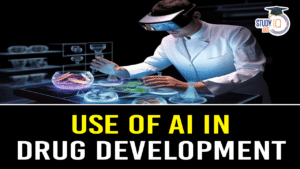Daily Current Affairs for UPSC 2023
Q) Recently seen in news, the ‘Project Akashteer’ is related to which one of the following?
- Development of a cyber security framework
- Transformation of the Army Air Defence
- Evacuation of Indians from war-torn Sudan
- Development of a prototype for India’s first human spaceflight
Daily Current Affairs for UPSC – 10 June April 2023
Explanation:
- Option (2) is correct: Indian Army is seen transforming the Army Air Defence (AAD) through Project Akashteer. Army Air Defence (AAD) aims to provide Point Air Defence to the nation’s key assets, such as nuclear facilities, oil refineries, military airbases, military-industrial complexes, communication nodes, logistic nodes, gun areas, surface-to-surface missiles, and so forth. It is formerly known as Air Defence Artillery until 2005, has been in operation since 1940. However, after 1996, the AAD’s modernization stalled. Project Akashteer is implementing a variety of new systems, most of which are indigenous, to create a comprehensive air defense picture for the monitoring, tracking, and shooting of air defence assets. It connects all of the AAD’s radars and control centres, unifies the air defence image, eliminate overlaps or duplications, and also integrate all of the weaponry. The needs for air defence on the northern frontiers differ from those on the western front. The project takes this into consideration.
Q) Consider the following statements about hydrogen generation:
- Alkaline seawater can also be electrolyzed for producing hydrogen.
- The carbon-based electrodes material in the hydrogen production process helps eliminate the chances of corrosion.
- The National Hydrogen Mission aimed at producing 5 million metric tonnes per year by 2030.
How many of the statements given above is/are correct?
- Only one
- Only two
- All three
- None
Explanation:
- Statements 1 and 2 are correct: Researchers from IIT-Madras have developed critical components for a cost-effective way to electrolyze seawater to generate hydrogen. The existing alkaline water electrolyser technology is energy-intensive, requires an expensive oxide-polymer separator, and uses fresh water for electrolysis. The team has developed an electrolyser using alkaline seawater instead of pure or freshwater. Carbon-based support material was used for the electrodes instead of metals to almost eliminate the possibility of corrosion. Transition metal-based catalysts that can catalyse both oxygen and hydrogen evolution reactions, were designed and developed. An economical cellulose-based separator was developed that serves the purpose of allowing hydroxide ions to pass through but prevents oxygen and hydrogen that are generated from crossing-over. All parameters have been optimized in such a way that water electrolyser can directly use photovoltaic-derived voltage to split seawater and generate green hydrogen and oxygen.
- Statement 3 is correct: Hydrogen is produced through water electrolysis. When the electricity used in the water electrolysis is obtained from renewables, it is classified as green hydrogen. The National Hydrogen Mission aimed at producing 5 MMT per annum with an associated renewable energy capacity addition of about 125 GW by 2030. Green hydrogen has the potential to reduce carbonization of the energy sector and the use of energy in end-use sectors such as transport, buildings and industry.
Q) With reference to ‘genetic engineering’, consider the following statements:
- It permits the transmission of certain genes between unrelated species.
- The Genetic Engineering Appraisal Committee is a statutory body constituted under the Biological Diversity Act, 2002.
- The Genetic Engineering Appraisal Committee is responsible for regulating the import and export of genetically modified animals.
How many of the statements given above is/are correct?
- Only one
- Only two
- All three
- None
Explanation:
- Statement 1 is correct: Genetically modified organisms (GMOs) can be defined as organisms (that is plants, animals or microorganisms) in which the genetic material (DNA) has been altered in a way that does not occur naturally by mating and/or natural recombination. The technology is often called “modern biotechnology” or “gene technology”, sometimes also “recombinant DNA technology” or “genetic engineering”. It allows selected individual genes to be transferred from one organism into another, also between non-related species.
- Statement 2 is incorrect: Genetic Engineering Appraisal Committee (GEAC) is a statutory committee constituted under the “Rules for the Manufacture, Use/Import/Export and Storage of Hazardous Micro Organisms/Genetically Engineered Organisms or Cells (Rules, 1989)” framed under the Environment (Protection) Act, 1986. GEAC functions under the Ministry of Environment, Forest and Climate Change (MoEF&CC). GEAC is chaired by the Special Secretary/Additional Secretary of MoEF&CC and co-chaired by a representative from the Department of Biotechnology (DBT).
- Statement 3 is correct: In accordance with Rules, 1989, Genetic Engineering Appraisal Committee is in charge of evaluating from an environmental perspective operations involving extensive use of risky microorganisms and recombinants in research and industrial production. It is responsible for evaluating requests for the release of genetically modified (GE) products and organisms into the environment, including field tests. It regulates the consumption of genetically modified (GM) animals and plants as well as their import and export.
Q) Consider the following statements about ‘Rail interlocking system’:
- It helps in managing the track configurations at rail junctions.
- The information is manually recorded in the railway control panel.
- Track circuits are installed to ensure multiple trains do not enter the same block of track.
How many of the statements given above is/are correct?
- Only one
- Only two
- All three
- None
Explanation:
- Statement 1 is correct: A Rail interlocking system is a critical component of railway signaling and is used to manage and control the safe movement of trains and track configurations at stations and junctions. Its main purpose is to prevent conflicting movements by ensuring that a train can proceed only when its intended route is set, locked, and verified as safe.
- Statement 2 is incorrect but statement 3 is correct: The interlocking system consists of a set of apparatus, which can be interconnected mechanically or electrically with the tracks, or both. In an electronic interlocking system, the interlocking logic is managed through software and electronic components. The system reads inputs from the yard and control panel, processes them in a fail-safe manner, and generates the required outputs. The signal apparatus, directs trains to stop (red light), proceed (green), or exercise caution (yellow) based on the status of the track ahead. Points are movable sections of the track that allow trains to switch lines, and electric point machines lock and unlock point switches in the desired position. Track circuits are electrical circuits installed on the tracks to detect the presence of trains and verify the safety of the track for train movement.
Q) With reference to ‘Sagar Samriddhi’, consider the following statements:
- It is a mobile app developed for disseminating the weather related information.
- It has been developed by Ministry of Earth Sciences.
Which of the statements given above is/are correct?
- 1 only
- 2 only
- Both 1 and 2
- Neither 1 nor 2
Explanation:
- Statement 1 and 2 are incorrect: Union Minister of Ports, Shipping & Waterways (MoPSW) and Ayush, launched ‘SAGAR SAMRIDDHI’ to bring transparency & efficiency. It is an online dredging monitoring system, to accelerate ‘Waste to Wealth’ initiative of the Government. It has been developed by National Technology Centre for Ports, Waterways and Coasts (NTCPWC) the technological arm of MoPSW. Capabilities of ‘Sagar Samriddhi’ include:
- Real time dredging progress report.
- Daily and monthly progress visualization.
- Dredger performance and downtime monitoring.
- Easy location track data with snapshot of loading, unloading and idle time.


 Editorial of the Day (18th May): Hurdles...
Editorial of the Day (18th May): Hurdles...
 Current Affairs 18th May 2024 for UPSC P...
Current Affairs 18th May 2024 for UPSC P...
 Use of AI in Drug Development and its Dr...
Use of AI in Drug Development and its Dr...

















